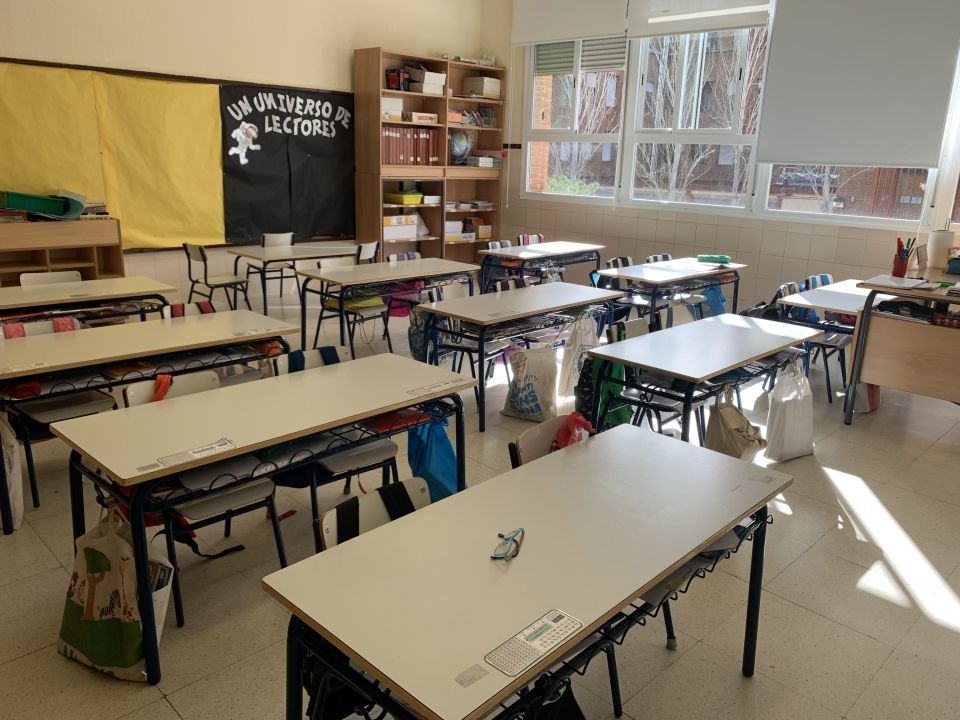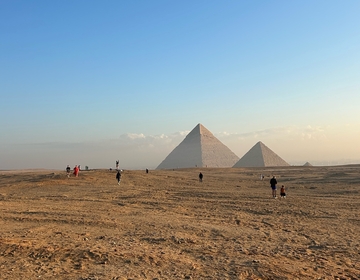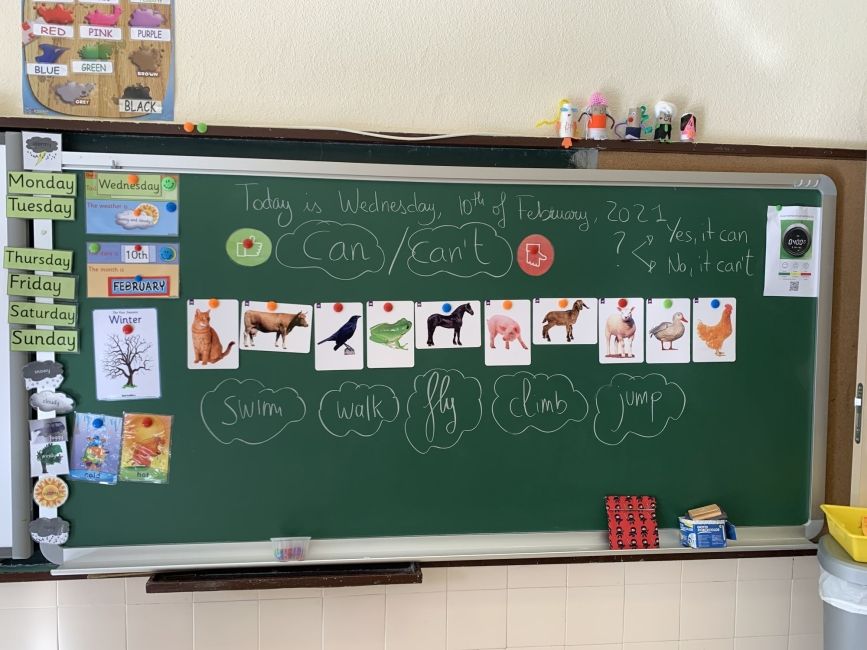The Covid Classroom
As 2021 brings us into year two of the coronavirus, perhaps many future auxiliares are wondering what this new phase looks like in the classroom. First and foremost, I am happy to report, thus far, that I have taught in-person since the start of the 2020/21 academic year. Though Covid-19 has demanded a universal change in the way teachers run their classrooms, I have experienced no scarcity in terms of valuable teaching experience, positive attitudes, or meaningful work relationships. Teachers' and students' energy is so infectious that, aside from the masks and potent smell of disinfectant, I'm not sure I would have noticed a difference. Still, as a move to Europe brings with it enough of its own unknowns, I’m happy to highlight some changes that future language assistants can expect to see in classrooms during the Pandemic: Season 2.
Allow me to say, that I am proudly Vermont-raised and after enough blizzards, snowbanks, and ice storms, I have exercised a high threshold for cold temperatures; therefore, the covid-condition I least expected was how freezing I am in the window-heavy classrooms. In an effort to keep learning environments as low-risk as possible, teachers keep the windows wide open, allowing city winds to invade and whisk away the germs. This isn’t entirely noticeable, unless you’re the auxiliar sitting in her own little corner nestled up close to the open air and blowing warm air on her hands. Spoiler alert: the bundled-up aux is me.

When I say I’m in “my own little corner”, *cue the Rogers and Hammersteins Cinderella showtune* I am referring to my small table in the back of the room where I work with groups of three or four students. Under normal circumstances, auxiliares bring kids into the hallway or an empty office space; however, in many schools, the administration now insists that auxiliares work with students inside of the classroom, in an effort to reduce movement and potential contact. Long rows of desks, Spiderman backpacks, and urban planning contribute to the lack of extra space, which causes a cramped learning area. Many students must bring their desk chairs to my table, creating louder and slower transitions between groups. Additionally, it’s a challenge to keep students engaged and speaking a second language while the rest of the class is listening to recordings, songs, or videos that are nearly impossible for seven-year-olds to ignore. The trick is to provide visually appealing materials like photo flash cards, books, and games to grab the kids’ attention.
Even while complying with strict safety measures, the kids are consistently excited to work in small groups and they know my schedule as well as I do. They often ask when it’s time for me to do a big group lesson and are eager to help. I’ve noticed that big group lesson planning reveals unprecedented limitations. For example, I need to involve students in the lesson without asking them to move around the classroom or into groups. If I ask for a volunteer, I may only ask one student at a time and they must use hand sanitizer before participating. I can’t move desks into a circle or out of the middle to do a group activity. Thankfully, this can provide an opportunity to be creative. For instance, in a lesson on clothing and weather vocabulary, I brought students on a “vacation in their imaginations” where they had to pack for a tropical climate using the clothing cards and shoebox suitcase I provided.This required no movement nor group work and yet students were completely invested in the learning.
In addition to being creative, teachers (under any conditions) need to be flexible. We need to be prepared to lose some classroom time due to covid protocols, like taking every student’s temperature, providing hand sanitizer before kids enter the class, and single-file bathroom lines. We also have to expect absences, because many students stay home due to exposure, fear, and infection among other reasons. And finally, auxiliares must be ready to adapt lessons online. Schools within the Community of Madrid will each expect varying levels of online engagement. My school can be considered as one of the stricter organizations, in terms of covid response. Whether one class or the entire school is in confinamiento, it is our responsibility to provide the best education we can with the resources we have. This may involve video conferences, educational videos, songs or activities, and voice recordings.
Every school responds to change a little differently. As an auxiliar, simply come prepared, flexible, communicative, and with a positive attitude. Even with limitations, teaching in a Spanish school is a joyful and valuable learning experience. Just like with any challenging situation, it is what you make of it. Among worldwide chaos, you’ll still experience the way your schools run, what their priorities are, and the students’ dedication to learning English. If not anything else, it’s inspiring to see such motivation and willingness to succeed.
P.S. If you get to be with the little ones, the bonus is their bonafide CUTENESS. Just wait until a first grader calls you Profe and maybe you’ll melt like me.
¡hasta luego!

Related Posts

Who Runs the World? Pharaohs.
Running the Pyramids Half Marathon in Cairo, Egypt Egypt and a half marathon? Let’s run it back—literally. I had the opportunity to travel to Cairo, Egypt, to run the annual... keep reading

Copenhagen Cosplays the North Pole
A Winter Weekend Guide If you’re searching for the perfect winter weekend getaway while studying abroad, Copenhagen deserves a spot at the top of your list. While the city is... keep reading

Let’s Moroccan Roll
A 4-Day Morocco Getaway from Madrid Morocco has become an increasingly popular destination for students studying and working abroad, and after spending four days there, it’s easy to see why... keep reading
